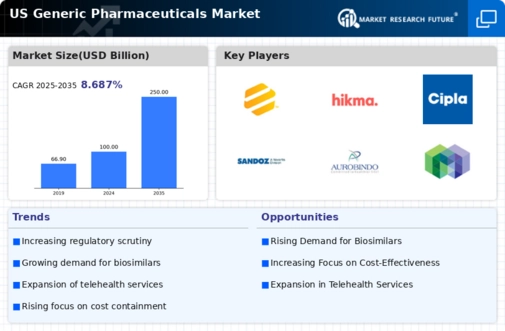The US Generic Pharmaceuticals Market is characterized by intense competition driven by various factors, including pricing pressure, regulatory dynamics, and the ever-increasing demand for cost-effective healthcare solutions. Companies within this market strive to capitalize on the patent expirations of branded drugs, enabling them to capture market share through generic alternatives.
This competitive landscape is populated by a mix of established players and emerging entities, each vying for a stronghold in a sector that is both critical to healthcare affordability and a significant contributor to overall pharmaceutical revenues in the United States. The market is influenced by environmental factors such as healthcare policies and consumer preferences, all of which shape the strategies adopted by manufacturers as they seek to expand their reach and enhance their product offerings. Endo International has established a notable presence in the US Generic Pharmaceuticals Market, leveraging its diverse portfolio and robust distribution channels.
The company has strategically focused on developing and offering high-quality generic medications across various therapeutic areas, which positions it as a reputable player in the industry.
Endo International benefits from its operational efficiency, commitment to regulatory compliance, and strong relationships with healthcare providers and consumers alike. With a foundation built on pharmaceutical innovation and quality assurance, Endo International continuously aims to enhance patient access to essential medications, ensuring that its products remain competitive in a fast-paced market environment. Apotex is recognized for its significant contributions to the US Generic Pharmaceuticals Market, where it has carved out a strong foothold through its extensive portfolio of generic products, including a wide range of oral and injectable medications.
The company places a strong emphasis on research and development to drive innovation, which is reflected in its ability to deliver high-quality generics that meet stringent regulatory requirements.
Apotex’s strengths lie in its agile manufacturing processes and strategic partnerships that facilitate a steady supply of essential drugs to the market. Additionally, the company has been involved in various initiatives, including mergers and acquisitions, to bolster its capabilities and broaden its market scope. With an unwavering commitment to affordability in healthcare, Apotex continues to make strides in fortifying its position within the US generic landscape.



















